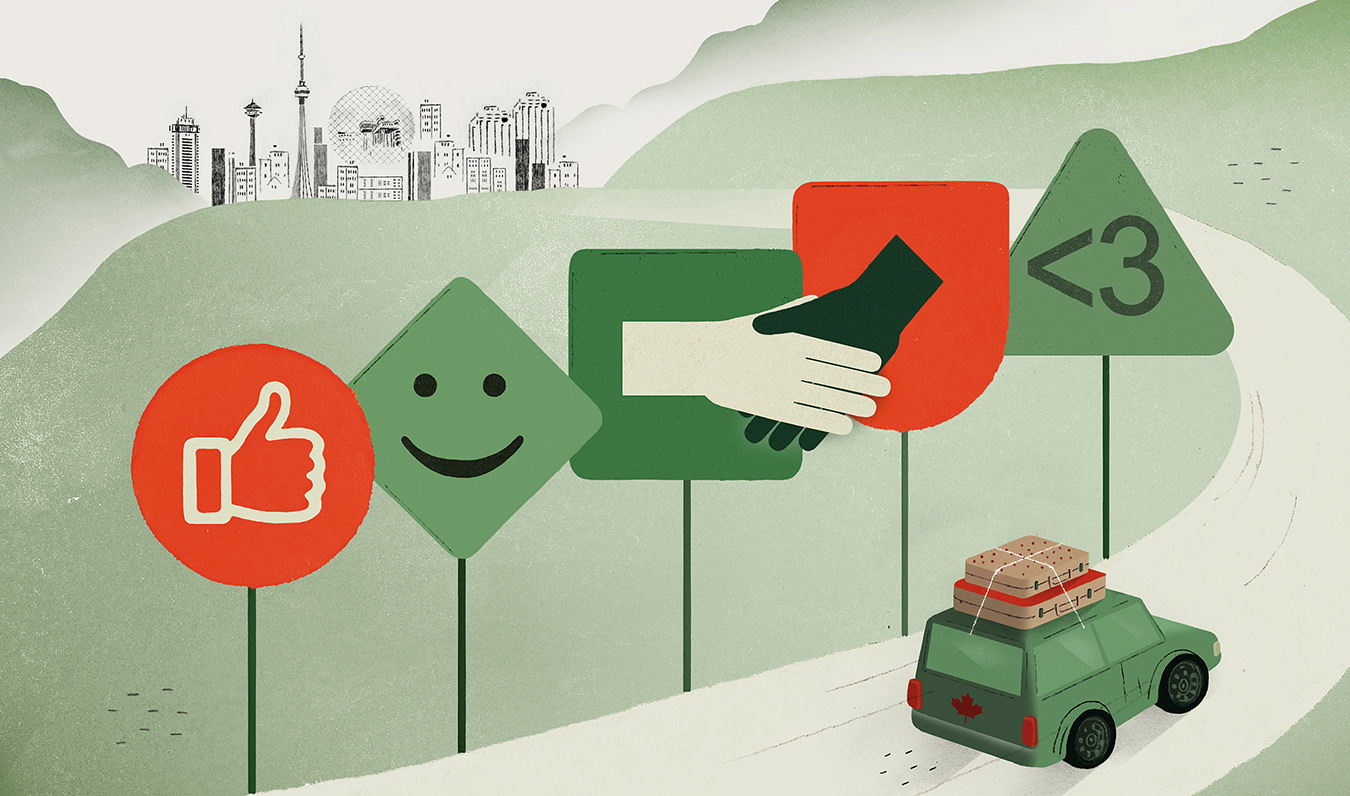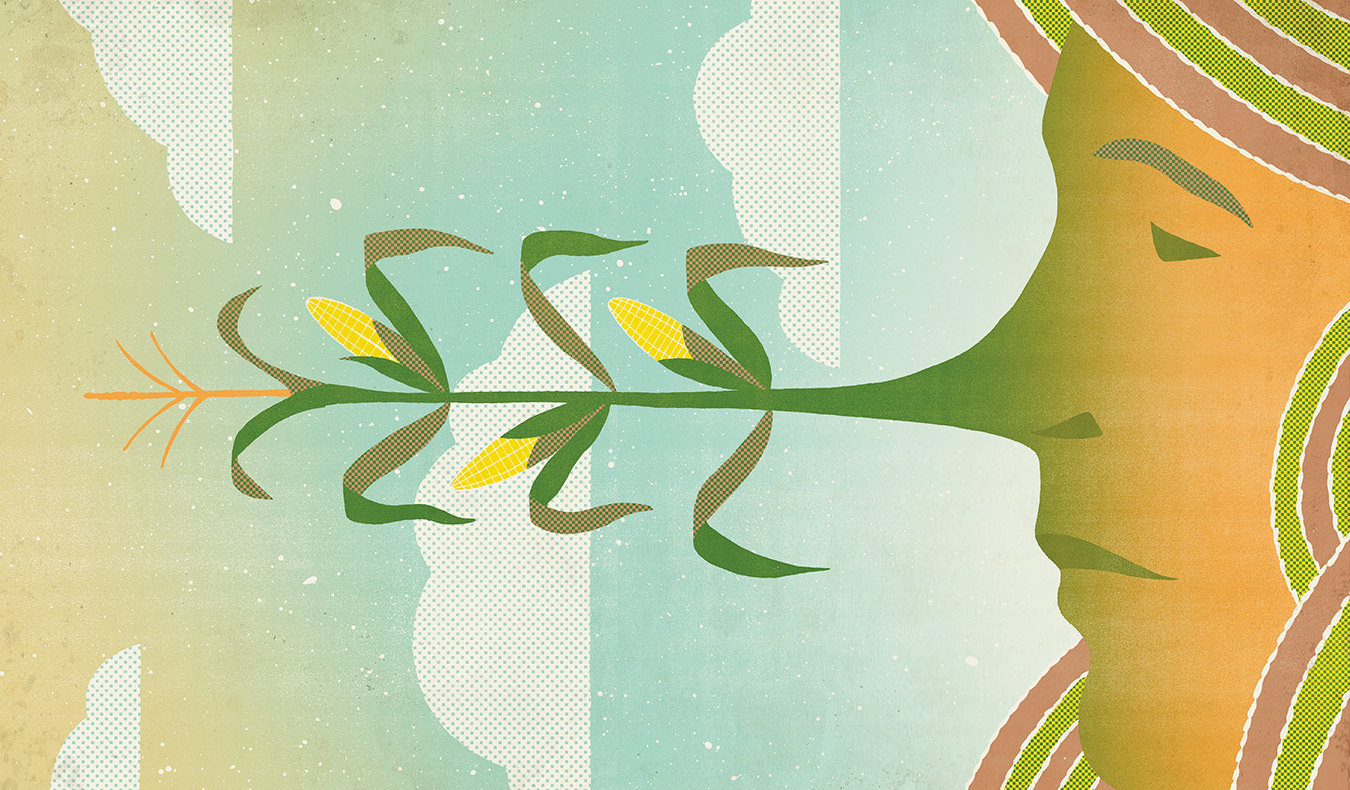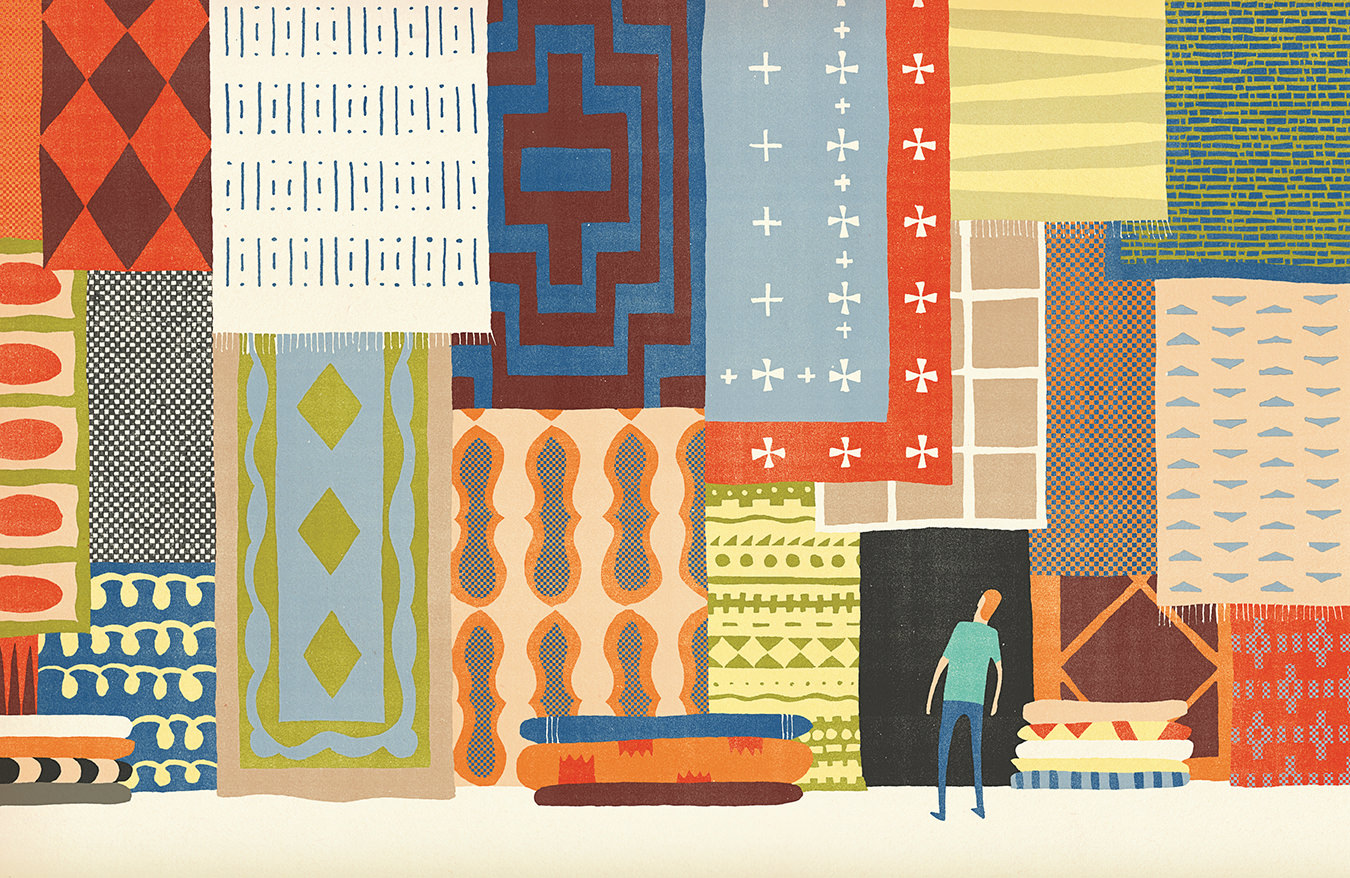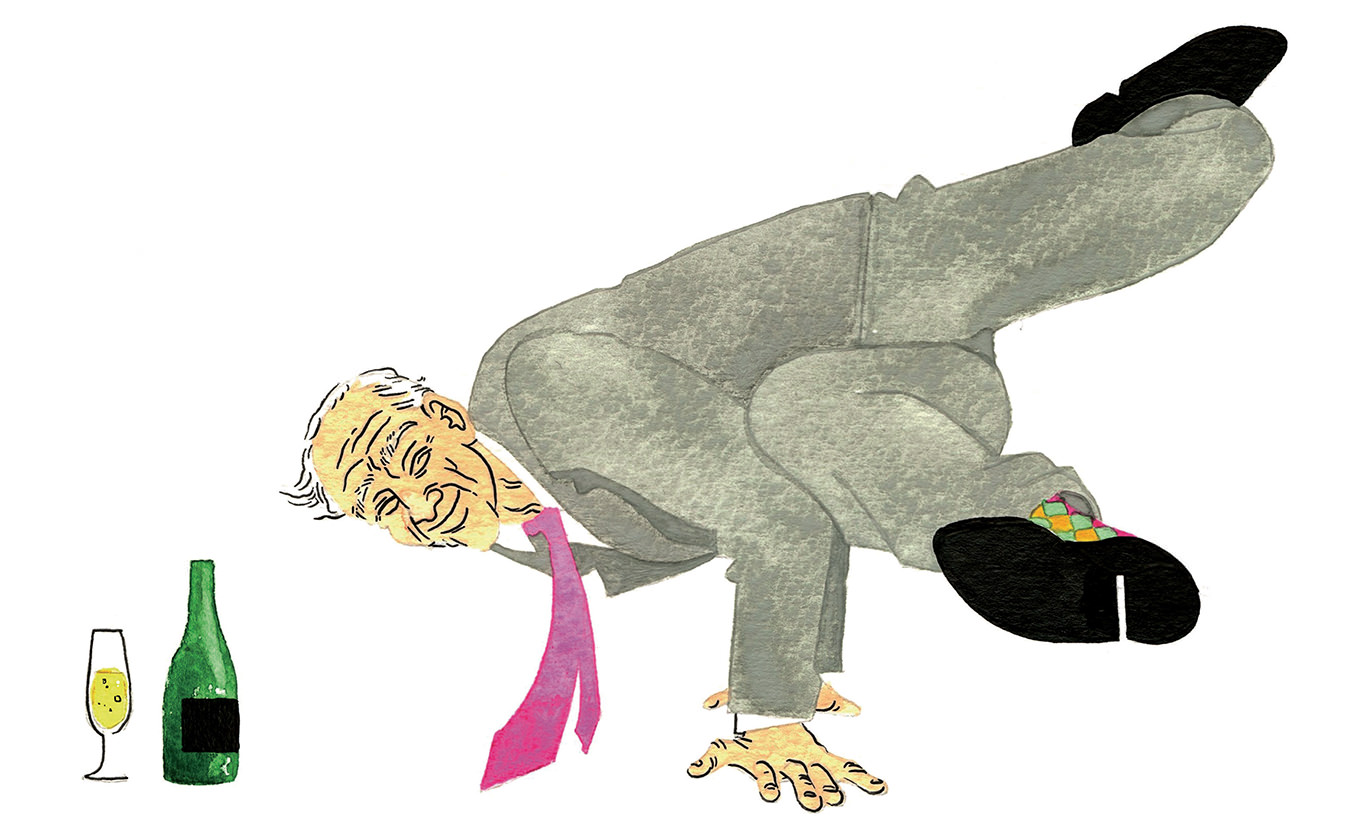Oh, Canada
Shades of niceness.

Canada’s a big country—the second largest, as we were proudly told over and over in grade school, giving us all glowing hearts. Look at it on the world map, all spread out in British colonial pink from coast to coast to coast. We ruled that map, and our identity, as Canadians, was tied up in all that land. But when you look around at where most of us actually live, we’re concentrated down along the American border in just a handful of cities. Although there aren’t that many major ones in Canada (we can count the ones that house more than a million on one hand, and the other hand could pick up most of the rest), just about 80 per cent of us live in urban areas. So that identity, our very Canadian-ness, is articulated most often in our urban environments.
What is it to be Canadian? That’s probably impossible to define, and we’ve twisted ourselves in knots trying to figure that out. Our reputation abroad is that we’re really, really nice, and even though that’s not entirely true, we’re not going to argue with it. Despite our population being spread over such a wide territory, with vast amounts of nearly empty land in between, if you ask most people if they feel Canadian they will proudly say yes, and if asked to expand on that they will likely pause, and say either we’re not Americans or we’re, well, nice. So it does boil down to a belief in our inherent niceness—why else would all those twentysomething travellers sew Canadian flags onto their backpacks? It’s branding: “I’m Canadian; I’m nice.”
Because we’re so concentrated in cities, it’s relatively easy (albeit a long distance) to take a tour of the places most Canadians live. Usually the only people who get to do this are rock bands travelling from show to show in Ford Econoline vans and federal politicians on campaign buses glad-handing their way across the nation. But if you are able, do a cross-country trip and get a big dose of Canadiana. All that stuff in between—the Canadian Shield, the Prairies, the interminable Rockies—has been overrepresented in our identity, so just do a quick driveby. In the cities, the differences between Canadian niceness are most evident and fun to explore; you’ll have an accurate gauge of the level of nice in each city. Richard Florida, the urban studies theorist who’s behind the “creative class” chatter, put out a book in 2008 called Who’s Your City? in which he, in part, looked at the happiness index of a place to help people choose where to live. In Canada, we might add the nice quotient.
Let’s start in Toronto—only because it’s the biggest (sorry) and I know it best as I live here (sorry). Perhaps more importantly, it’s famously filled with people from everywhere else in the world, but a less famous fact is that it’s also filled with people from across Canada who moved to the big city for a variety of reasons. Arguably, Toronto is the most Canadian of Canadian cities since everybody is represented—we could have Little New Brunswick or Little Winnipeg neighbourhoods, but it would be un-Canadian to show off so much.
Somehow, once people move to Toronto, they become Torontonians, which means their Canadian niceness is muted. They’re nice, but they don’t want to show other people they’re nice. It lets us operate efficiently, but keeping all this emotion to ourselves eventually makes us passive-aggressive. It’s the fermented juice that the city runs on. Here, should you transgress some societal convention, you will not be overtly admonished. Usually, nobody will say a word if you light up a cigarette too close to building doors or if you walk too slow on a sidewalk or if you take too long in a Starbucks line ordering an elaborate latte. Instead, disdain will be expressed in very steady, regular (but not too regular) audible sighing. The passive-aggressive sigh should really be Toronto’s motto, rather than “Diversity Our Strength”. If a situation escalates or goes on too long, there might be shoe tapping. Because Torontonians never let out this negative energy, it continues to build, creating an incredible amount of internal pressure that will explode in the streets when something big happens one day, like the Leafs winning the Cup (the city will burn down and Vancouver Canucks fans will be off the hook). Luckily for our city, that day will never come.
What is it to be Canadian? That’s probably impossible to define, and we’ve twisted ourselves in knots trying to figure that out. Our reputation abroad is that we’re really, really nice, and even though that’s not entirely true, we’re not going to argue with it.
It isn’t that Torontonians are unfriendly or unkind (ask for directions and you’ll probably get an answer, but only after the person has walked three steps away from you), there is just something in the old “Toronto the Good” uptight WASP tradition that continues to infect all newcomers here. The first sign of infection is never making eye contact with anybody on the street. Nobody wants to be pushy, and eye contact is almost like saying hi to a stranger. On public transit, people will take surreptitious looks at other people, and then dart their eyes away when their gaze is caught, so in Toronto you constantly seeing strangers’ eyes moving quickly away from you. It could give you a complex about being unattractive if you didn’t know it was just Torontonians trying to be nice.
It’s different up the highway in Montreal. Anybody, but especially Torontonians, new to its streets will be nearly knocked over by the amount of eye contact in that city. Montrealers look at each other with a passionate intensity that seems to go deep into the soul or, more to the point, penetrate your clothing. Montrealers have a way of glancing that is completely sexual, as if they’re deciding whether to lead you up to a room at the Fairmont Queen Elizabeth hotel that very moment or to give you a heartbreaking not-today-not-ever smirk. It’s disconcerting to have that happen in the middle of the day; most of us are more prepared for this kind of interaction at night, in a bar, while a little tipsy and girded. Once you get into it and stare back, the conversation starts to work both ways and suddenly, in the collective imagination of everyone on the street, everybody is naked. How nice is that?
Eye contact over in Vancouver is easygoing, West Coast–style. No sex, no avoidance, just nice and open. You can easily have conversations with strangers in Vancouver (as you can in other West Coast cities like Portland and San Francisco). On the SkyTrain or in bars, you can meet people in a way that, from a Torontonian perspective, seems like a very quaint, small-town kind of thing. It’s like you’re never by yourself in Vancouver; a new acquaintance can be made on the spot. They also aren’t afraid to publicly admonish others. As a person from the East, I jaywalk when there is no traffic. On my first trip to Vancouver, I left my hotel and walked up Robson Street. There was little traffic at Hamilton Street so I kept my stride and crossed, but nearly stopped in the middle of the street when I noticed the severe dirty looks from the half-dozen Vancouverites waiting on the other side. I quickly made my way around them and ducked into the big library to compose myself after this eyeball assault: this just isn’t done in Toronto.
Of course, late into the evening, anything goes, as people in Vancouver go to bed extremely early, almost like they’re really living in Eastern Standard Time. Peter C. Newman once said that in Vancouver all human endeavours must compete with God. God, it seems, tends to win people over, as they turn in early in order to climb mountains or sea kayak in the morning. (I have never understood that—why not stay out late and put on the hiking boots at 1 p.m.? The mountains aren’t going anywhere.) This attachment to the land in Vancouver is also unheard of in Toronto: some of us don’t even know the city is located on a lake.
There is still a healthy amount of gentle aloofness in Vancouver’s niceness, whereas its hilly counterpart on the East Coast, Halifax, does nice too, but without reservation. Eye contact and even smiles abound when walking along Spring Garden Road or Barrington Street downtown, but then, a lingering look. More? Not like the Montreal get-in-my-bed linger, but a “Hey, come into my kitchen and we’ll have a party” look. Of course, that’s an Atlantic Canada cliché—kitchen parties—but as one finds wandering about our cities, those regional clichés do have echoes of truth found on the sidewalks. There’s so much nice banter between strangers in Halifax that a Torontonian might get impatient while waiting in line behind people and start doing the passive-aggressive thing, which can be easily mis-interpreted in a good-natured place like Halifax. Foot tapping? Must have a tune in his head, nice fellow.
On my recent visit, a fellow on Grafton Street, just below the Citadel, introduced himself as Albert. “I haven’t seen you around here before,” he said, and welcomed me to Halifax, told me to check a few things out, and went on his way. In Halifax bars, people have given me their e-mail addresses after a casual chat about the place in case I have any questions later—and all without the background security checks that would be required in Toronto.
So is Halifax Canada’s most friendly, nice city? Calgary might give it a run for that title and may be this country’s sleeper capital of niceness. Underneath that reputation of Western rugged individuality, oil baron tycoons, and stampede toughness, there is a gentle humanity running through it, and it’s most readily expressed in how people drive there. Despite the CTrain, it’s a car town, and the roads are wide. Really wide. On my first trip there, I was walking along one of the big arterials and stopped to cross in-between lights. When I turned toward the road, all six lanes of traffic came to an immediate stop. I thought there must have been an accident I didn’t notice, but no, just silence—until the cars honked and drivers waved me across. This kind of thing is unheard of in Toronto, where a mix of too many cars, bad driving skills, and an enormous sense of Midwestern entitlement make it a car-versus-car Wild West experience. Calgary makes people feel like Moses, letting locals impress visitors with their ability to part traffic. That’s nice. I was staying with friends on that trip and they all assured me it’s how it works in Edmonton as well.
As Canadians, we have lots of nice to choose from. I’m happy with Toronto’s passive-aggressive nice—“I’m busy, don’t bug me!”—but visiting our other cities is, well, sometimes nice, too.




